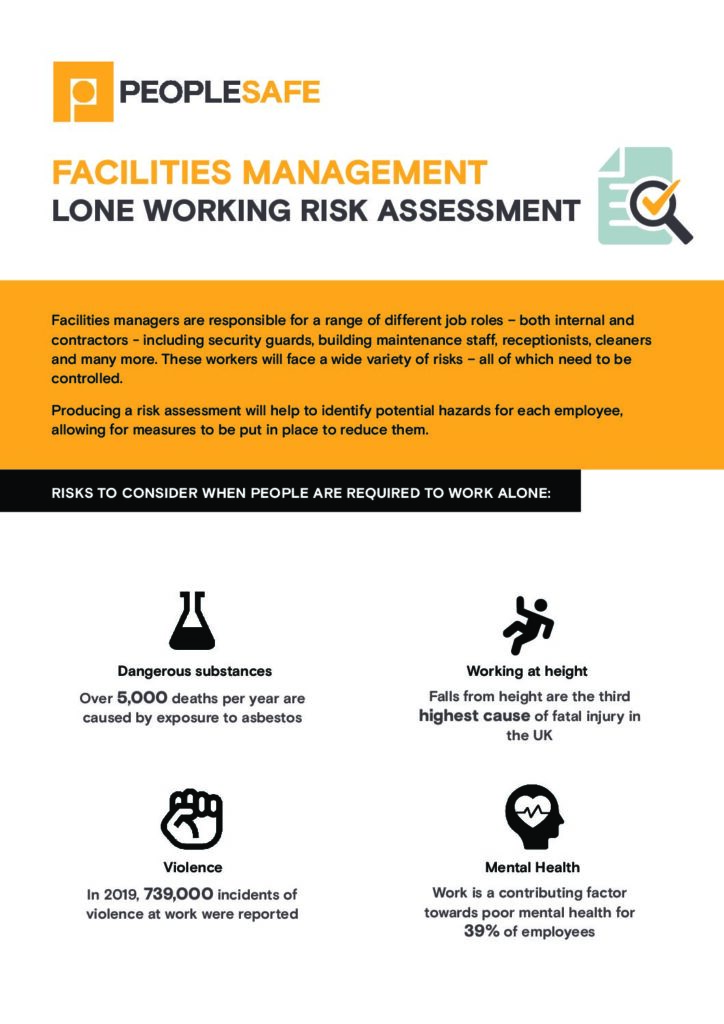Facilities Management Lone Working Risk Assessment
Facilities managers are responsible for a range of different job roles – both internal and contractors – including security guards, building maintenance staff, receptionists, cleaners and many more. These workers will face a wide variety of risks – all of which need to be
controlled.
Producing a risk assessment will help to identify potential hazards for each employee, allowing for measures to be put in place to reduce them.
Risks to consider when people are required to work alone
- Dangerous substances – Over 5,000 deaths per year are caused by exposure to asbestos
- Working at height – Falls from height are the third highest cause of fatal injury in the UK
- Violence- In 2019, 739,000 incidents of violence at work were reported
- Mental Health – Work is a contributing factor towards poor mental health for 39% of employees
5 step risk assessment
- Identify the hazards. Consider safety risks, physical risks and wellbeing risks. For some job roles, you may also consider chemical risks such as asbestos or cleaning products.
- Decide who might be harmed and how. Once your hazards have been identified, you should consider who these hazards
harm, and how they are dangerous. - Evaluate the risks and take action to prevent them. Reasonable action should be taken to control the risks identified. It may not be possible to eliminate each hazard, but you must put measures in place to keep workers safe such as training or implementing a personal safety service.
- Record your findings. It is a legal requirement to record the findings of your risk assessment if you employ 5 or more people . The
document can be used to inform employees of potential risks. - Review the risk assessment. Work environments are constantly changing so it’s imperative that risk assessments are reviewed periodically or whenever significant change takes place to ensure they are always relevant.
For more information on how to conduct an effective risk assessment, download our risk assessment guide.

